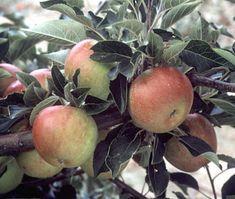

2003 may not be the easiest of seasons for the New Zealand top fruit industry. Initially crops were hit hard by severe frosts, particularly those in Hawkes Bay. Then, hailstorms last November knocked production in the Nelson region. The outcome was a marked fall in output, significant since these two areas combined account for approximately 90 per cent of national availability.
Apples in particular were adversely affected. Simon Harvey of Mack Multiples explains: “This season generally could be difficult for a number of reasons. For example, there is every likelihood there will be greater availability of small fruit. Royal Gala is a case in point where apples in the 70-75mm category will be less plentiful, possibly culminating in a shortfall for loose sales.
“However, this situation could be offset to some extent by the British preference for poly-bagged fruit, where the emphasis is on the longer counts. Supplies of Cox are also likely to be tighter, as will be the case with the Pacific range, although Braeburn and Fuji appear to have come through largely unscathed.”
At this stage indications suggest that overall exports will amount to between 14-16m cartons, 3-4m less than last year. Of this, one company ñ Enza Ltd ñ is forecast to handle half globally, with the lion's share targeted at Europe. The balance will be marketed by a further 40-plus exporters, although numbers have declined since deregulation in 2002 when 86 operators were involved. This follows stiff competition on the marketplace at large, particularly from Chile, South Africa and, more recently, South America.
While many markets will be targeted emphasis in the EU will remain on the Netherlands, Germany and the UK. Robert Jarvis, technical director at Empire World Trade Ltd, told the Journal: “The UK will again remain a key export destination for New Zealand apples, taking approximately 20 per cent of exports. This market is relatively buoyant for early imports, particularly for New Zealand Cox, and is especially so this time around in view of the current shortfall.”
This is Empire's fourth season in New Zealand fruit and the second of deregulation. “We feel we are retaining our grower base because of the satisfactory returns to producers and the support we provide on the ground. All involved have done an exceptional job this year in selecting the best fruit from a non-vintage crop. In fact, those growers with a definite UK programme have benefited from deregulation.
“However, in the absence of a regulated market, NZ growers cannot afford to get complacent about quality as they compete against strengthening Southern Hemisphere growers,” Jarvis adds.
Meanwhile first arrivals, carried aboard the Southern Harvest and the Luzon Strait, are due at Sheerness this week. But, as Medway Ports marketing manager Paul Glock points out, the season has started around two weeks later than usual: a consequence of variable weather, which delayed fruit set on early varieties.
“In spite of this we still anticipate handling similar volumes to last year,” says Glock. “In fact, New Zealand remains a key component of our fresh produce business which, overall, comprises around 17,000t of fruit and vegetables annually.”
For Sheerness, additional strength has come from ongoing investment in modern facilities, reputedly some of the best in the country.
Once again Royal Gala, Cox, Fuji and Braeburn will front EU imports, although gains are being achieved year-on-year with Jazz® and Moonglo®. This is particularly the case in the UK, Germany, Sweden and Spain. Sonya is also finding favour with UK consumers, as is NZ Rose with those in Asia.
Other varieties are in the pipeline, although breeding programmes are being hit hard by a NZ$1m cut in government funding. This is of paramount importance since the New Zealand industry has maintained an innovative stance in terms of varietal development for many years and now runs the risk of losing its exclusivity to new varieties.
Alongside this, there has been a general decline in apple production. This is borne out by industry figures from the latest farm census which show that plantings alone have dropped by more than 15 per cent since the late 1990s to stand at 11,600 hectares in 2002.
Waikato, Canterbury and Auckland in particular have faced decline. This downward trend has been due to poor grower returns and low orchard profitability resulting in an increasing number of growers diversifying into other crops.
In comparison the outlook for pears is brighter, especially for Doyenné du Comice and Taylor's Gold, both of which fill valuable niches in the European supply calendar during the May and June period.
In fact, most varieties were largely unaffected by frosts and hail due to their longer flowering period. As such total output is forecast at 23,400t in 2002/03, marginally down on the 23,800t of the previous season but in line with that of the year before.
Of this, 14 per cent ñ 3,500t ñ is destined for processing, a figure marginally up on the 3,400t of the previous year. A further 43 per cent is bound for markets overseas ñ put at 10,000t in the season under review and generally on the ascent.
In the main the US is the prime destination, followed by the EU within which the UK is the largest market followed by the Netherlands. However, new outlets are being developed ñ especially for blushed fruit.
The Journal would like to point out that it contacted other large players within the industry who declined to make a comment, citing deregulation of the marketplace.